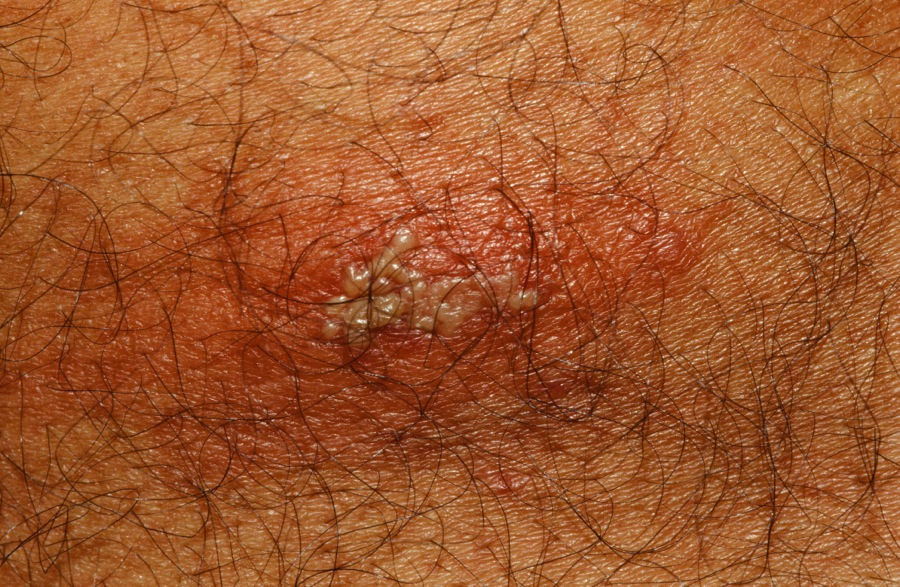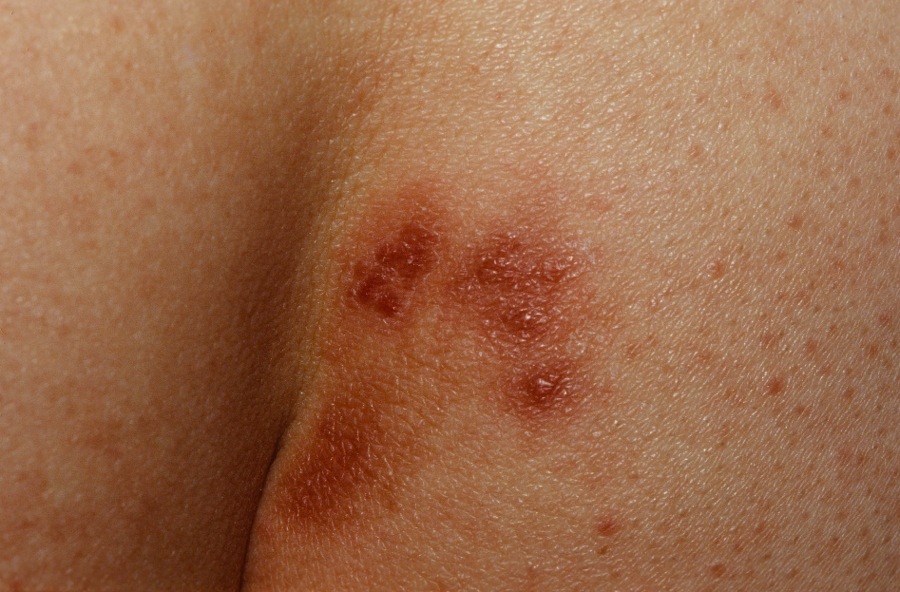 Grouped vesicles that are evolving into pustules.
Grouped vesicles that are evolving into pustules.
 Grouped vesicles that are evolving into pustules.
Grouped vesicles that are evolving into pustules.
Herpes simplex is a virus that may infect any part of the skin, lips or genitalia. The initial infection is also called the primary infection and recurrences are also called secondary infections. The primary infection is often much more extensive and painful than subsequent recurrences. This is because the body's immune system has not been exposed to the virus and it needs time to mount a response. During secondary recurrences, the body's immune system is ready and can fight back the virus in a much shorter time. In between infections, the virus remains dormant in one of the body's nerves. After a trigger such as a cold or the sun, the body's immune system is not as strong and this allows the virus to reactivate.
The classic presentation of herpes is grouped vesicles on an erythematous base. If the tops come off, an erosion with scalloped edges may result. The vesicles contain clear fluid initially, but within 2-4 days, the fluid becomes white-like pus.
The most common location for a flare of herpes is the vermilion border of the lip or herpes labialis--the so-called cold sore or fever blister. These names originate from the fact that both a cold and a fever are common precipitants of a herpes outbreak. The sun is also a frequent trigger. Initially, the patient may feel tingling, burning or pain in the area. Within a day or so, the skin becomes swollen and red. Individual vesicles may be seen or erosions may be the main sign. Crusting follows after several days.
Herpes may also occur on the fingers. This condition is called herpetic whitlow.
Herpes often develops on the buttocks of women. It is most likely that the virus was contracted during vaginal sex and the virus took up residence in one of the spinal nerves. Recurrence can then occur posteriorly or anteriorly.
If a patient gets a diffuse rash 1-2 weeks after a herpes outbreak, two conditions may be considered: erythema multiforme and eczema herpeticum.
If confirmation is needed, a viral swab for an antigen testing and/or culture may be performed. A vesicle is opened and the roof and floor are swabbed. If only an erosion is present, it may be swabbed.

Herpes just to the right of the gluteal cleft.
Homepage | Who is Dr. White? | Privacy Policy | FAQs | Use of Images | Contact Dr. White